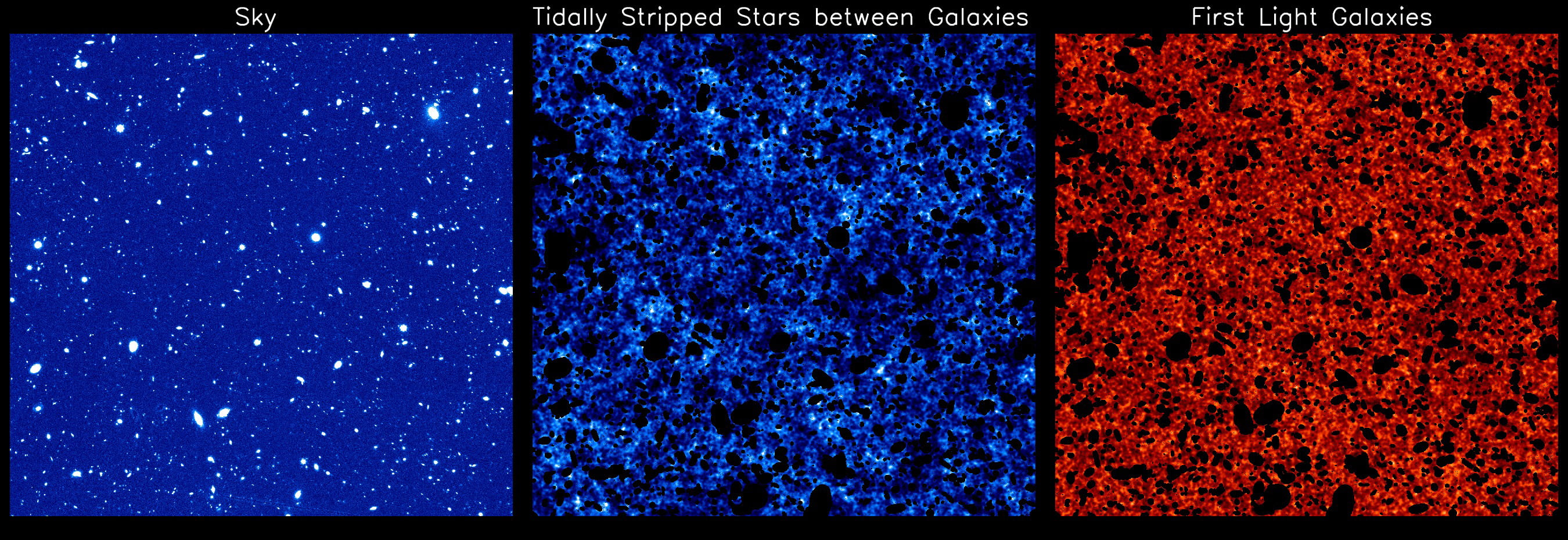On the cutting edge of the cosmos
Recent astronomical discoveries confirm UCI researchers’ role as galactic groundbreakers
From the farthest ancient reaches of the universe to our own starry backyard, UC Irvine cosmologists are tracking down new galaxies tiny and mighty. In recent papers, they’ve identified signature celestial bodies that will help scientists worldwide.
The findings are a testament to the university’s strong outer-space program, says School of Physical Sciences Dean Kenneth Janda: “We have astronomers carefully charting our universe, including nearby galaxies that are much smaller than anyone had previously observed and others near the edge that are among the youngest observed. Work like this places UC Irvine at the forefront of current astronomy research.”
The new star bodies are also a thrill for anyone who loves the data that powerful telescopes built by international consortiums are bringing back to Earth.
One revelation was that two hungry young galaxies that collided 11 billion years ago are rapidly forming a mega-galaxy, dubbed HXMM01, about 10 times the mass of the Milky Way, according to a Nature paper by physics & astronomy professor Asantha Cooray’s group, with help from scientists at 27 other institutions on three continents.
Capturing the creation of such a large, short-lived star body is extremely rare – the equivalent of discovering a missing link between winged dinosaurs and early birds, say the researchers, who relied on data from the now-deactivated Herschel space telescope and observatories around the world. HXMM01, they write, “is the brightest, most luminous and most gas-rich submillimeter-bright galaxy merger known.”
It is, however, fading away as fast as it forms, a victim of its own cataclysmic birth. As the two parent galaxies smashed together, they consumed huge amounts of hydrogen, emptying that corner of the universe of the star-making gas.
“These galaxies entered a feeding frenzy that would quickly exhaust the food supply in the following hundreds of millions of years and lead to the new galaxy’s slow starvation for the rest of its life,” says lead author Hai Fu, a UC Irvine postdoctoral scholar.
The work solves a long-standing riddle about how giant elliptical galaxies developed rapidly in the early universe but stopped producing stars soon after. Other astronomers have theorized that giant black holes in the heart of the galaxies expelled the hydrogen necessary for stars. But the UC Irvine team members say they found definitive proof that cosmic merger-related gas gobbling causes the speedy burnout.
“Finding this galaxy is as important as the discovery of the archaeopteryx was in understanding dinosaurs’ evolution into birds, because they were both caught at a critical transitional phase,” Fu says.
The new galaxy was initially spotted by UC Irvine postdoctoral scholar Julie Wardlow, also with Cooray’s group. She noticed “an amazing, bright blob” in images of the so-called cold cosmos – areas where gas and dust come together to form stars – recorded by the European Space Agency’s Herschel telescope, with important contributions from NASA’s Jet Propulsion Laboratory in Pasadena. “Herschel captured carpets of galaxies, and this one really stood out,” Wardlow recalls.
Follow-up views at a variety of wavelengths were obtained from more than a dozen ground-based observatories, particularly the W.M. Keck Observatory in Hawaii.
Keck’s 10-meter telescopes also played a big role in a UC Irvine discovery of a different magnitude: the least dense galaxy in the known universe. Clocking in at a mere 1,000 or so stars with a bit of dark matter to hold them together, Segue 2 offers tantalizing clues to how iron, carbon and other elements key to human life originally formed. But its size and weight are its most extraordinary aspects.
“Identifying a galaxy as tiny as Segue 2 is like discovering an elephant smaller than a mouse,” says UC Irvine cosmologist James Bullock, co-author of the Astrophysical Journal paper. Astronomers have searched in vain for years for this type of dwarf galaxy, long predicted to be swarming around the Milky Way. Their inability to find any “has been a major puzzle, suggesting that perhaps our theoretical understanding of structure formation in the universe was flawed in a serious way,” Bullock says.
Segue 2’s presence as a satellite of our home galaxy could be “a tip-of-the-iceberg observation, with perhaps thousands more very low-mass systems orbiting just beyond our ability to detect them,” he adds.
“It’s definitely a galaxy, not a star cluster,” says postdoctoral scholar and lead author Evan Kirby. He explains that the stars are held together by a globule called a dark-matter halo. Without this acting as galactic glue, the star body wouldn’t qualify as a galaxy.
Segue 2, discovered in 2009 as part of the massive Sloan Digital Sky Survey, is one of the faintest known galaxies, with light output just 900 times that of the sun. That’s miniscule compared with the Milky Way, which shines 20 billion times brighter. But despite its tiny size, researchers using different tools originally thought Segue 2 was far denser.
“The Keck telescopes are the only ones in the world powerful enough to have made this observation,” Kirby says. He determined the upper weight range of 25 of the major stars in the galaxy and found that it weighs at least 10 times less than previously estimated.
Astronomers from Yale University and the California Institute of Technology also contributed to the Segue 2 work.
Fellow UC Irvine authors of the papers are Jae Calanog, Michael Boylan-Kolchin, Jianjun Jia and Manoj Kaplinghat. Funding was provided by NASA, the Southern California Center for Galaxy Evolution and the National Science Foundation.

